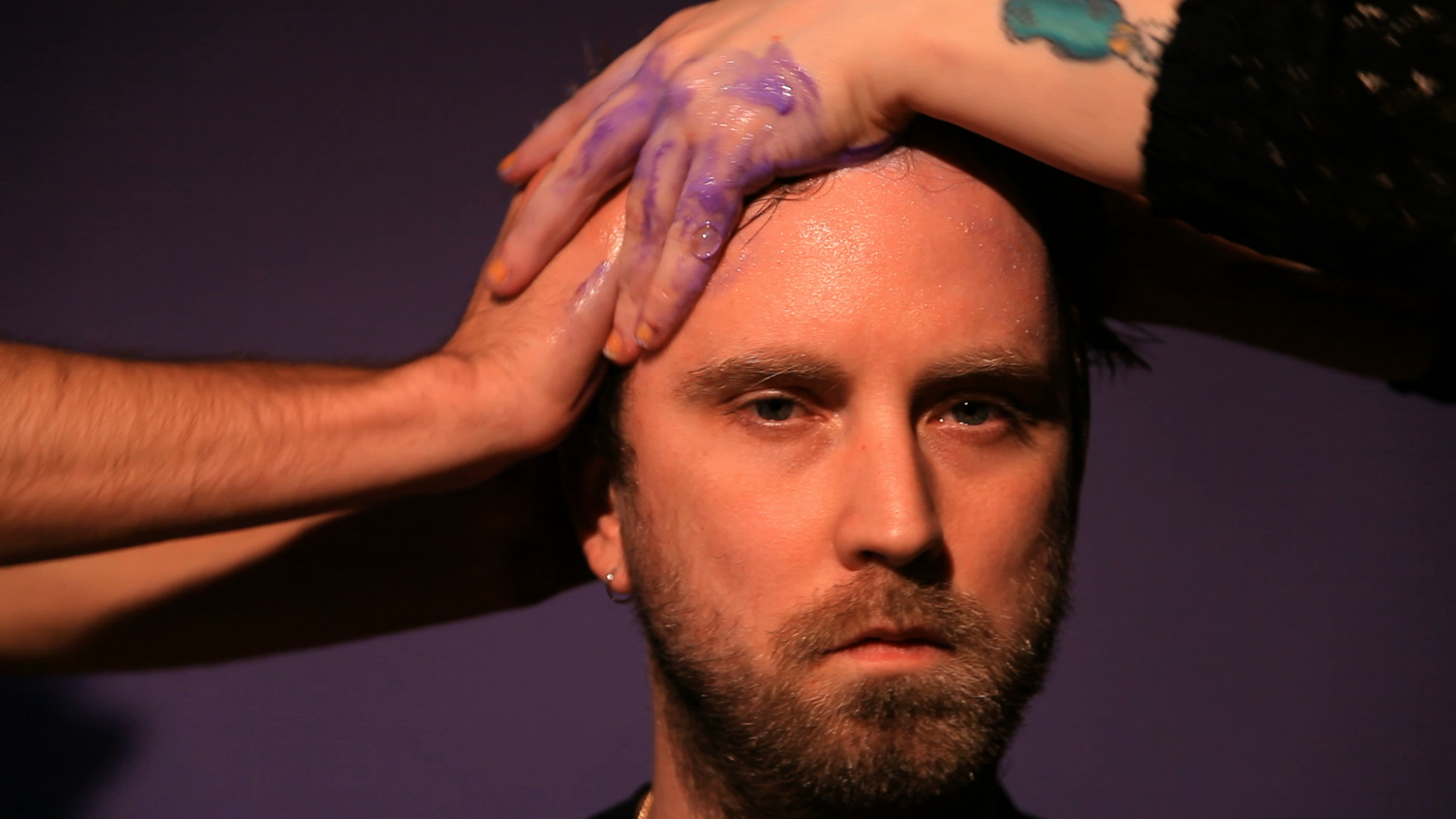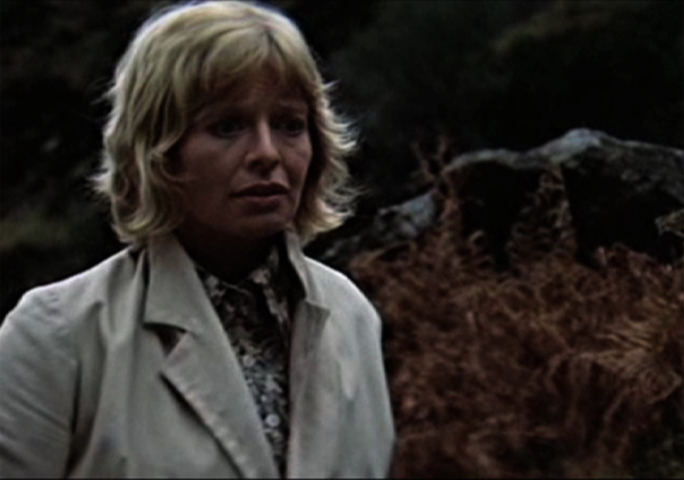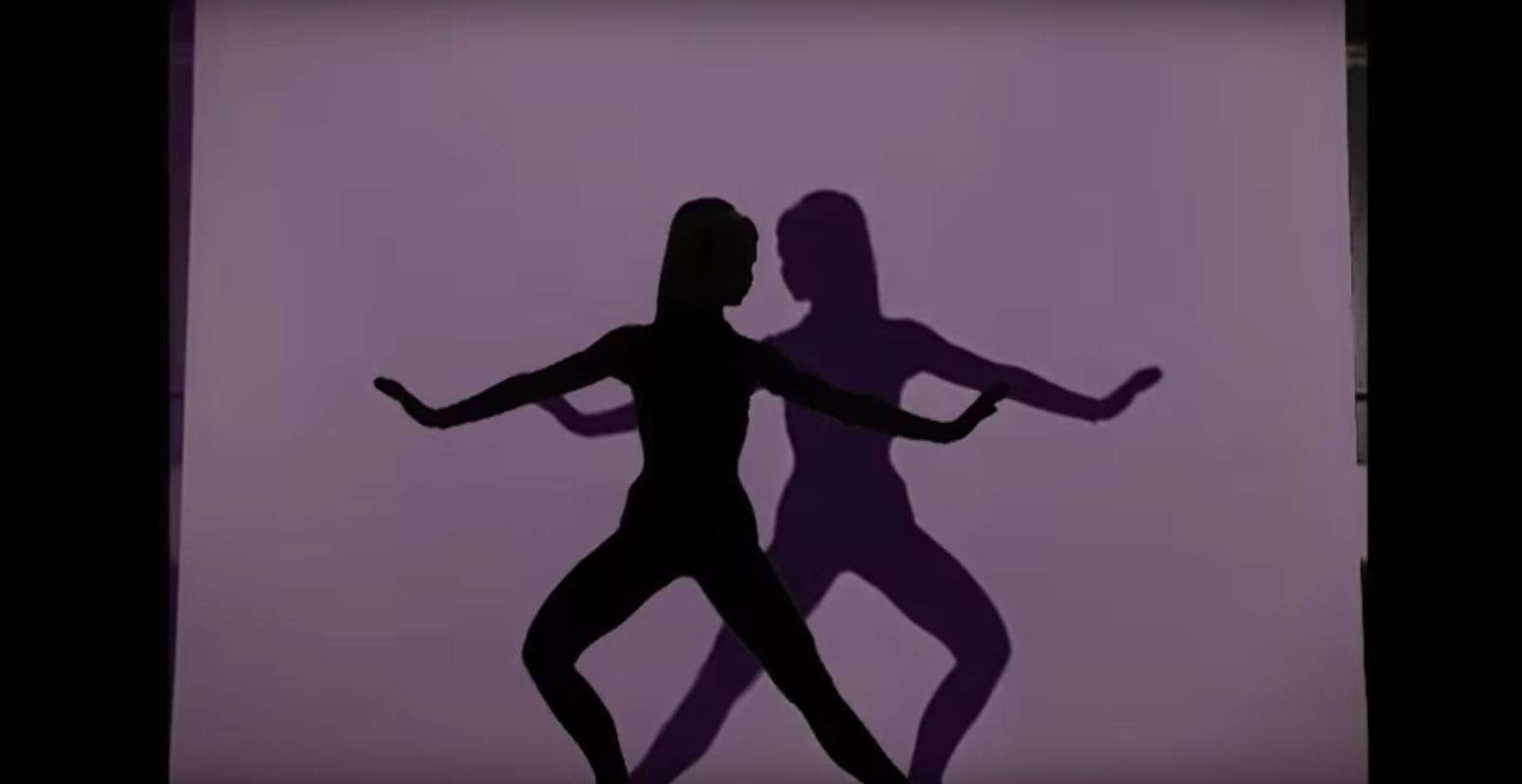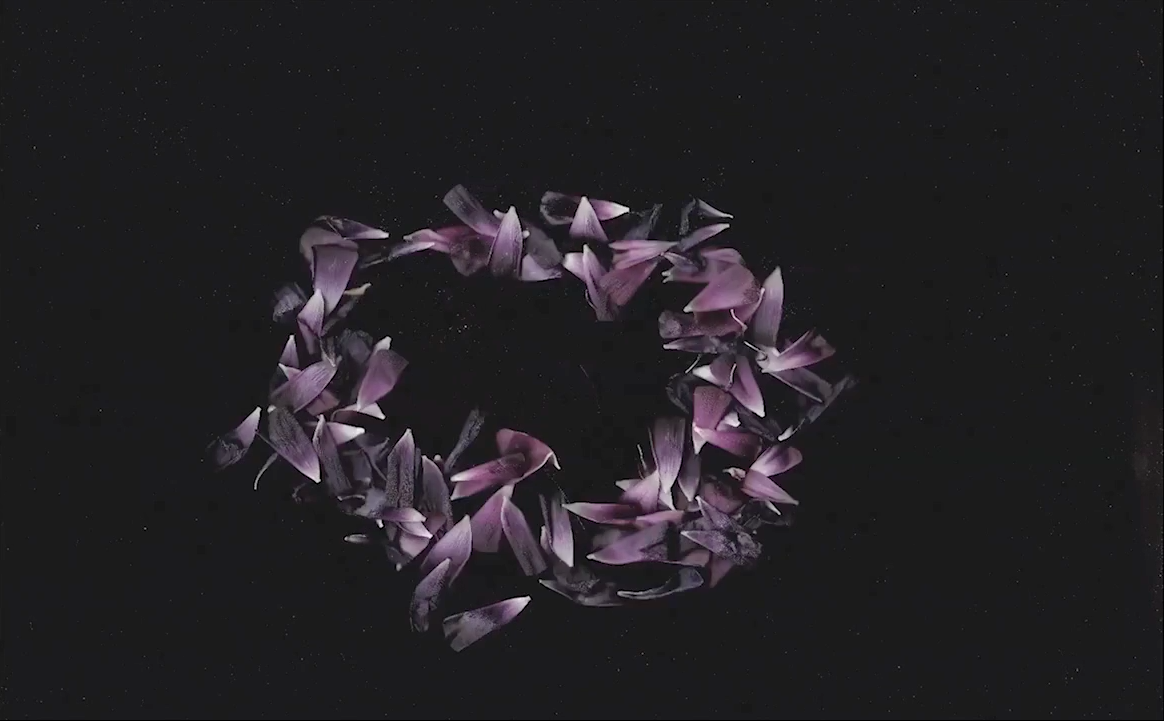Our spring 2018 season premieres today with work by Chicago-based artist and School of the Art Institute of Chicago alum, Latham Zearfoss (BFA 2008).
Zearfoss produces time-based images, objects, and experiences about selfhood and otherness. Outside of the studio, they contribute to collective motions toward joy and reflection through social projects.
This week, we welcome School of the Art Institute of Chicago graduate student Evan Fusco to examine Zearfoss’ work in a reflective essay interlaced with additional insight from artist Aay Preston-Myint.

(This essay on the work of Latham Zearfoss can be read four different ways: first is reading only the interview I conducted with Latham’s friend/collaborator Aay Preston-Myint), second is just the essay that I have written on the work of Zearfoss, third is all the way through, allowing the interview to interrupt your reading of the essay and inform it, and fourth is to read the essay through, and then the interview, so as to not allow either to interrupt the other. In this way, you have the opportunity to choose how you read and understand this essay, giving you a certain amount of power in interpreting. I don’t want my voice to be the only one heard.)
In attempting to understand what makes a good artist I wonder if it’s someone who understands what they’re talking about and exists within the spaces they want to work. Rather than taking up a position of absolute authority on any particular subject, this artist allows their unique position in the world to dictate the work. They position their point on a level playing field with that of the viewer, creating a dialogue as opposed to preaching from a pulpit. The artist Latham Zearfoss truly embodies this kind of artist, modeling their approaches to art on the way they want to see the world.
Evan Fusco: First, I want to ask you about your relationship with Latham, both as a friend and collaborator, and how that has both changed over time, and affected how both of you work as artists.
Aay Preston-Myint: Hmmm that’s kind of a long conversation so I’ll try to be brief… we’ve known each other for what must be 14 years now… maybe even fifteen. We’ve been through every possible permutation of acquaintance, roommate/housemate, collaboration, friendship, cohort, and dating that you can think of. So, it’s an interesting relationship to say the least. While we both work across media, we have really different technical training. Latham comes from a time-based media background and I come from object making… I feel like I’ve probably learned a lot about storytelling from them, while maybe I’ve offered my experience with materials, composition, viewer-object relations, and the like in return. When we collaborate or do group projects (like the Body Doubles catalogue) they’re really good at making prompts for the various people involved and finding threads through the material we collect, I tend to take more charge over things like format, design, installation, etc. I’m pretty messy in the studio but in group situations I lean towards process and structure, while Latham is maybe a little bit more into seepage and vulnerability as generative devices. But it really depends, it’s never as polarized as that.
In reference to their approach to art-making, Zearfoss has asserted: “Pop cultural debris serves as an emotional referent: indices of personal history – the poetic cataloging of lived time… Culture is a cluttered map of selves and others. It is here that you and I make meaning as much out of sameness as we do out of difference.” When they write about their work, they are not some disconnected observer of the world; they are working to better understand it, just as much as anyone else. They want to “move away from a frigid preoccupation with form and distanced irony.” This is most immediately obvious in their collective projects to engage communities like Chances Dances, a queer dance party, Make Yourself Useful, a critical space for White “allyship,” and Open Engagement, an itinerant conference on socially engaged art. It is this collaborative and participatory way of thinking that drips into the works that would typically “represent” Zearfoss’ practice so that they are always working through their projects just as much as the audience.

EF: How does Chances Dances (and maybe their other social projects, but mostly Chances Dances) figure into Latham’s practice? I also wonder about what you think of the importance of including those kinds of projects as a part of an artist’s larger practice, including how it affects your own.
APM: I think making the decision to actively include all of that work in a larger practice has been important to both Latham and myself, but I don’t want to be prescriptive in terms of whether that could work for everyone. Some people are, or would be, really bad at “social practice” …while other people might choose to act out their politics, or at least consciously so, through activities that are not art-related. I’m not even sure if social practice is the right phrase because that sounds very institutional… while Chances has definitely engaged in a lot of institutional work, it was never part of our core mission, and we could just as well have never set foot in a museum or gallery under that collective umbrella. That said, Chances, despite not being art, has been a major part of both of our “practices” and enabled and supported other people’s artwork as well…I think what both of us have been doing lately is trying to understand how these different facets of our practice inform and influence each other. For me, working on this weird community/thing that is Chances, I learned to stop worrying if what I am doing will yield any kind of recognizable art object… and in the process I also learned a lot about how art and art labor are valued, about how non-artists interact with art, and what kinds of stories I want to tell with my studio work.

In HOME MOVIE (2012), originally titled RECYCLE BINGE, we see Zearfoss’ attempt to “aestheticize the contradictory impulse to capture and record moments that are either personal or of little interest to a public audience.” Throughout the video you hear a voice trying to grapple with the problem of the separation between yourself and the world, beginning with the question, “How do you describe how you feel?” Language is a powerful tool, but ultimately fails us in our attempts to communicate with others. The feeling always sits on the tip of our tongues, yearning to get out but trapped by some unseen barrier—maybe our teeth? Either way Zearfoss has defaulted to image as a way to invite the viewer to empathize with them. They present us with intimate images, documentation of public performances, random cell phone footage of a palm tree and a praying mantis. However, the climax comes in a video of a raging building fire. You can hear who I assume to be Zearfoss say, “I feel sort of guilty… I mean there’s nothing we can do right?” and then someone else say “There’s nothing we can do.” This bit in HOME MOVIE, the title of which implies more domestic and innocent content, ends up being quite tragic and potent, working in tandem with the voice carried throughout the video. The voice states, in an attempt to describe the problem of how to describe how you feel, “How do you describe red to someone who is totally blind?” We may never meet Zearfoss after encountering this video, or we may meet them, but never truly get to know them. If we do get to know them, we will never fully understand them, but Zearfoss doesn’t see this as a reason we shouldn’t at least make an attempt.
EF: How do you think the catalogue and conversations you both created and facilitated for the MCA show Body Doubles figures into Latham’s practice as an artist, and do you see the concerns of the artists in that show as concerns Latham tackles in their work.
APM: Well, I think maybe in the case of that project, it’s very in step with their (and our/mine Chances’) way of collaboration…the natural inclination is to spread resources and access to everyone’s mutual benefit. Going back to Chances, we chose “Platforms” as a title for our retrospective because the practice is not just about producing concrete objects… the practice is a platform on which other people’s lives and work are supported and take place. In the case of the MCA show, we used the publication as a platform to showcase the work of local artists that were doing work similar to what was in the show and positioned them as authoritative voices… this was meant as a bit of a corrective to the fact that the Museum of Contemporary Art Chicago doesn’t offer a lot of direct support (at least comparative to what they spend most of their space/money on) to actual emerging contemporary artists in Chicago. This has maybe started to change a little bit with their new “Commons” space and major exhibits by folks like Amanda Williams, Bill O’Brien and Michael Rakowitz, but even still those are folks that already have a ton of support outside of the museum…the Museum is still more of a follower than a leader when it comes to local talent. Ironically we got into a huge fiasco with the museum around the labor, expectations, and power relations surrounding that project but there isn’t room to spill that tea here.
In terms of the relationship to Latham’s studio work, it certainly ties into this idea of bodily presence, as your next question suggests, this idea of “the body as an object and a tool.” The connection to the show was the idea of admitting the vulnerable fact that you have a body too, even if you might be in a position of authority or remove (artist, author, spectator, judge, teacher president)…like, let’s all stop projecting the fact that we are bodies that hurt, are stupid and mean sometimes, that make mistakes, and need to be accountable, let’s stop projecting that onto other people, and sit back and take in what that means and what other kinds of relationships could be built from that.

If language is a problem that we encounter in trying to understand others, then a possible answer comes in a later work titled Something to Move In created in collaboration with the artist Joel Midden for the Chicago Film Archives. In this video Zearfoss and Midden return to the political era of the late 60s, specifically to the dialogue of a film titled Black Moderates and Black Militants. The solution these artists have come to is found in the power of music and dance. The two remix of the political discussion into a music track and pair it with footage of a dancer in silhouette from the same era. In doing so, they have created a contemporary attempt to “resuscitate a bygone revolutionary thrust”. In the remixing political speech of the 1960s, Zearfoss and Midden find new hope in it, communicating through words, bodily movement, and a beat you can dance to. Here we see–maybe a bit clearer–the political power of hosting parties like Chances Dances, which in its creation of a queer space to dance, allows for communication between people and their bodies without ever having to utter a word.
Yet, Zearfoss does return to language to answer why we would return to the past in order to look towards a productive future. Towards the end of Something to Move In the voice Zearfoss and Midden have been remixing for the beat becomes clear and says: “You can’t build a building until you get rid of the building that’s there.” In the dialogue, this is a metaphor that advocates for the destruction of capitalism through revolution. If returning to the past seems to be sympathetic towards the building that’s there, you have to remember it’s not the systems of the 1960s Zearfoss and Maddin are remixing; it’s the people.
EF: How does the body as not just something we have but an object and a tool factor into Latham’s work? in asking this question I’m think specifically about the voices in Dirge, the dancer in Something to Move In, as well as the footage of bodies and the footage those bodies are juxtaposed with in Home Movies,
APM: I’m not sure how well I can speak about Dirge in relation to that question, especially since I’ve spent the least amount of time with that work, maybe Home Movie… but, definitely in Something to Move In…I think there is an intentional layering of form there. The modern dancer with the political panel….remember, these things are going on in the same place and the same time, but we historicize them as being worlds apart. I think the layering serves as a cue that the body-as-art or body-as-art-object is often apoliticized by dominant standards of formalism and beauty, but the video asks us to remember that the body contains multiple ideas/uses/intents at once, these things don’t need to be compartmentalized…the idea that these things are separate (beauty, art, politics, human rights) constitutes a means of controlling and limiting historical narratives.
In that case, even if the center does not hold, Zearfoss and artists like them are still hopeful we’ll find a new one.
